We all know that our friends across the pond drive on the left side of the road. But the practice is not solely British — roughly one-third of the world’s population drives on the left side of the road. In fact, traveling on the left was common dating all the way back to the Roman Empire.
The question that begs answering isn’t why do we drive on the right side of the road, but rather why did we stop traveling on the left? A quick history refresher shows why most of the world made the shift and why certain countries have not.
Early Travelers Stayed to the Left
Traveling on the left side of the road began before there were paved roads or cars – or even the thought of paved roads or cars, for that matter. Archaeological evidence suggests the ancient Romans drove carts and chariots on the left, likely so they could hold a weapon with their dominant right hands and more easily reach an enemy. The practice was kept alive in Europe all the way through the Middle Ages.
Up until the 1700s, traveling on the left side was customary, but neither exclusive nor mandatory anywhere in the world. That began to change in the second half of the century when, in 1773, the British government passed the General Highways Act, which encouraged driving on the left. The practice became law with the enactment of the Highway Act of 1835.
But other corners of Europe seemed to prefer keeping to the right. In pre-revolutionary France, the aristocracy rode on the left, with the peasantry to their right. Once the revolution started, however, nobles wanted to hide their identities and joined their fellow countrymen and women on the right side of the road. Right-side traveling became the law in Paris before the close of the 18th century.
Colonialism Spreads Driving Customs
Both Britain and France, and their respective invasions and colonialism, would prove to have an enormous effect on driving habits around the world. When Napoleon was in charge of the French army, he ordered newly conquered countries to stay to the right. (There’s a theory he preferred this method because he was left-handed.) France’s conquests covered large swaths of Europe including nations like Belgium, the Netherlands, Austria, Germany, Poland and Spain.
Great Britain was busy expanding its empire at this time, as well. As a result, it brought its left-side practice to all corners of the globe, including Australia, New Zealand, India and the West Indies. (Britain also later influenced Japan to travel on the left when British engineers helped build the country’s first railways in the late 1800s.)
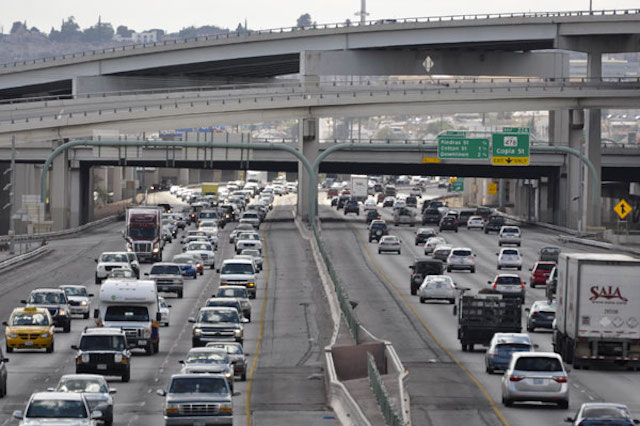
Why Do Americans Drive on the Right Side of the Road?
It would be easy to think the practice of driving on the left side came over the Atlantic in the 1600s with the early European settlers. After all, America’s first Colonists in Jamestown and Plymouth were from England. But that doesn’t seem to have been the case. Albert C. Rose, who served as “unofficial historian” of the U.S. Bureau of Public Roads during the agency’s early years, found that “all available evidence seems to indicate that the RIGHT-HAND travel predominated in Colonial America from the time of the earliest settlements.”
One possible reason early Colonial Americans eschewed the left-side rule was due to, as Rose describes, a “smoldering opposition to customs of the Old World.” Remember, many English settlers were escaping persecution in their home country. Additionally, other European countries were establishing settlements in America and implementing their own practices.
But the most significant impetus for traveling on the right in America came the following century with the introduction freight wagons. These vehicles were pulled by a team of horses and usually didn’t have a driver’s seat. Operators typically sat on the rear left horse, in order to hold a whip in their right hand and be able to reach the other horses. Over time, wagon drivers naturally began to gravitate toward the right side so they would be positioned closer to the center of the road. This gave them a better view of oncoming traffic, reducing the likelihood of a collision.
By the late 1700s, staying to the right was common practice in America, yet there was still no rule or law dictating it. The first known legal requirement to do so came in 1792, when Pennsylvania enacted legislation to build a turnpike from Lancaster to Philadelphia. The document stated traffic must travel on the right side of the road. Twelve years later, New York became the first state to require right-hand travel on all public highways.
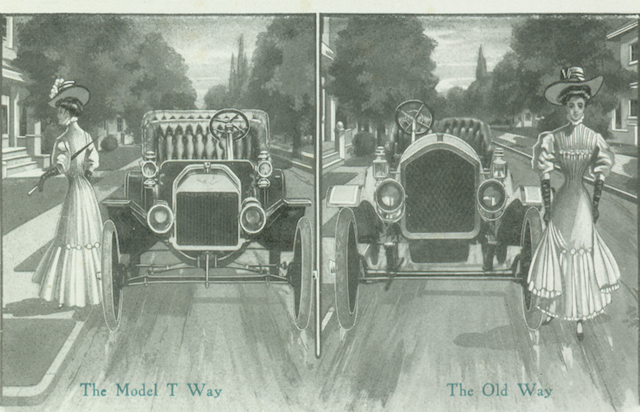
Driving on the Right, Sitting on the Left
By the start of the Civil War, the right-hand rule was followed in every state, according to the Federal Highway Administration. However, many drivers of light horse-drawn wagons both drove on the right and sat on the right side of their vehicles. They did this in order to get a better view of another potential danger: roadside ditches. Indeed, many considered running into these ditches to be more dangerous than colliding with another vehicle.
When automobiles were first introduced in the late 1800s, they were thought of as horseless wagons. As such, most American cars produced before 1910 had steering wheels on the right side of the vehicle.
It wasn’t until Ford released the Model T in 1908 that operating a vehicle while positioned on the left side began to become common practice. The revolutionary car was one of the first automobiles to have a left-side steering wheel. Within a few years, the Model T had become so popular nearly every other automobile manufacturer was putting the driver’s seat on the left. More than a century later, the practice remains.
Want more automotive history? Head to AAA.com to learn about the origins of everything from stop signs to car horns.
28 Thoughts on “Why Do Different Countries Drive on Different Sides of the Road?”
Leave A Comment
Comments are subject to moderation and may or may not be published at the editor’s discretion. Only comments that are relevant to the article and add value to the Your AAA community will be considered. Comments may be edited for clarity and length.

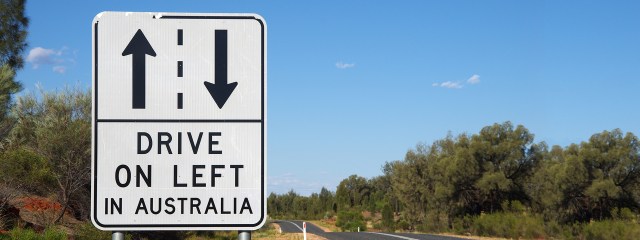


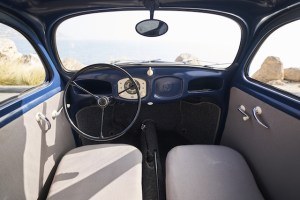
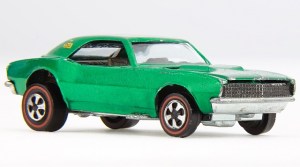
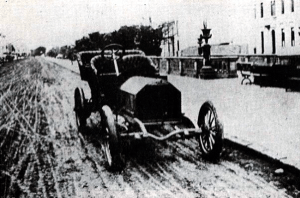





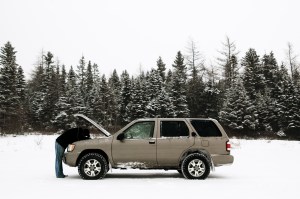


Even in the Westerns TV series and movies, old and new, we see 19th Century pioneers and settlers driving their wagons while sitting on the right side. Those who produced and directed these films likely did research and found old photographs that showed this.
I knew from multiple examples throughout history about the practices relating to right-handed dominance in humans (e.g. shaking hands with the right hand showed you weren’t holding a weapon, etc.). One question I had when I read the article was how much right-hand dominance influenced US auto and truck manufacturers in their decision to standardize the left side driver position? With column gear shifts on the right side of the steering wheel, and floor/console gearshifts in the center, I can think of three possible supporting reasons for right-handed drivers – convenience (as with most of the dashboard controls) and safety (pre-automatic shifting), and the US rapid growth of mass production technology and processes which pushes for standardization in manufacturing to better manage costs.
Interesting that in many (most?) Caribbean Islands (Puerto Rico excluded) one drives on the left in a right-hand drive vehicle.
In St. John, VI. drove on left with steering wheel on left. Tricky on an island with many many hills, curves and donkeys in the roads.
Before I left for my trip to the UK, I got a great tip from a guy who frequently drove there: make good use of the painted lines in the right center of the road/highway lane. He was onto something. The biggest problem I encountered was not having my intuitive sense of where the left shoulder of the road/next lane of the freeway was. Normally, I can drive a small car or large truck and “just know” my width as per the passenger side…that sense was missing, so the road striping was a big help. Driving stick shift with the other hand was no big deal and an easy adaptation. I drove 1100 miles on the M freeways and on small rural roads that required you to pull partly off to let the oncoming guy pass. That width thing.., i.e. where exactly does my left fender end, that persisted right up to the end of my trip…that, and constantly hopping into the wrong side of the car, and wondering what happened to the steering wheel?
The other thing to worry about if you visit the UK or Ireland is that most rental cars will be manual shift. Take care!
So why did both Italy and France produce cars with right hand drive until the early 1950’s?
Why didn’t you mention Ireland? They also drive on the left, sitting on the right side.?
I hope to go to the UK when the pandemic is truly over. I wish I could find a left side driving computer simulation that would allow me to practice different left side situations before I get there.
Interesting article. I was also wondering how the decision is made by car manufacturers as to whether to put the gas filler on the left or right side of the car. Would be another interesting article. Seems to me most cars have the filler on the left (driver’s) side as evidenced at large gas stations where most people are waiting for left side pumps and right side pumps are empty. Forget about the signs that say “hoses reach both sides”. They never do!
True, most cars have the filler on the driver’s side. However, all Subarus sold in the US have the filler on the passenger’s side, which is safer if one runs out of gas and needs to fill the tank manually. Otherwise, one is closer to oncoming traffic.
Subaru has also traditionally been less willing than other Japanese manufacturers to adjust their vehicle designs to accommodate the desires of the American market. The gas tanks are on the passenger side in the US because they were designed to be on the driver side in Japan. The plastic front bumper on my WRX even as two predrilled holes designed for longer, but less wide Japanese license plates, but no holes for US plates (despite the fact that any such holes would be fully covered by Japanese plates). In states requiring front plates, this obligates the owner to either drill two additional holes for American plates or purchase an adaptor kit. Not a big deal for the owner. But, considering the volume of Subaru’s US market, also not a big deal for the manufacturer.
When I started driving on the left in England, managing right turns was one challenge. So on my first trip, I arranged my itinerary so I could do only left turns at the beginning to Gain confidence! Start in a smaller city with less traffic as well. The other problem is reversing direction. Even now, years later, there’s a tendency to take off on the wrong side after pulling into and backing out of a driveway or side road.
It still doesn’t answer the question as to why in the late 1800’s or very early 1900’s there wasn’t some kind of standardization where it wasn’t agreed upon worldwide that people drove on one side or the other. I seem to remember actor Matthew Broderick getting into a very serious car accident in Scotland and it was all because he was driving on the right hand side and forgot that he was in Scotland.
Funny. “Worldwide standardization” . Even in the US, States can’t work together on safety issues for their citizens. Now multiply that for all countries.
When I went to a wedding in Wales I decided to rent a car for a week and drive through the beautiful landscape. I didn’t realize the difficulty I would have driving on the left side with the steering wheel on the right. The roundabouts were the most difficult to handle. I was honked by other vehicles. It took about 5 days for me to get used to it. In spite of all it was one of my fondest memories.
When I went to a wedding in Wales I decided to rent a car for a week and drive through the beautiful landscape. I didn’t ress as luxe the difficulty I would have driving on the left side with the steering wheel on the right. The roundabouts were thee we the most difficult to handle. I wasn’t honked by other vehicles. It took about 5 days for me to get used to it. In spite of all it was one of my fondest memories.
The picture above that part shows that it was safer for the passenger to get out on the curbside. It was already the law to drive on the right, so this appears to be done for passenger safety (usually the woman in those days it seems!)
I cannot imagine driving on the left side of the road in a car with right hand drive, as a North American I find it make perfect sense. I remember an article in a car magazine about the placement of the steering wheel center of the dash, so driving on either side of the road would be more easily accomplished in this manner.
Having driven my British (Right Hand Drive) car on the continent, I can say it’s horrible trying to pass a vehicle when you’re sitting far from the center of the road, and this also applies to driving an LHD car in a country like Britain. You have to move most of the car to the opposite side of the road before you can even see whether there’s oncoming traffic.
Working for the post office I drove mail trucks with the steering wheel and controls on the right and never had any problem.
Driver in the center? Interesting, but there would be less room for the front-seat passenger, or two passengers in the old days.
I’m just curious. The article ends with the Model T having the steering wheel on the right, opposite from the light drawn wagons but not explain why Ford made this change which subsequently changed everything.
Look at the picture – safer for the passenger! They don’t have to step out into on coming traffic – are able to step out onto the sidewalk.
Hi Bob, thanks for the question! As Joan mentioned, Ford believed this alignment made it easier for the passenger to get in and out of the vehicle.
The caption of the image near the end of the article says Ford moved the steering wheel to the left to make it safer for the right-side seated passenger to exit the car.
Although traffic on North American roads seems historically to have mainly travelled on the right side of the road, operators of motor vehicles sat on the right for many years – likely to stay out of the ditch. Why Ford decided to make the change is unknown. One theory is that it was to allow the passengers to disembark without having to step on the roadway. Another is that traffic had become heavy enough to make oncoming vehicles more of a hazard than the ditch.
Looking at the Ford ad, at first I thought the lady was the driver, then I realized back then women were more likely to be passengers, and that is what the ad was emphasizing, the passenger’s safety.